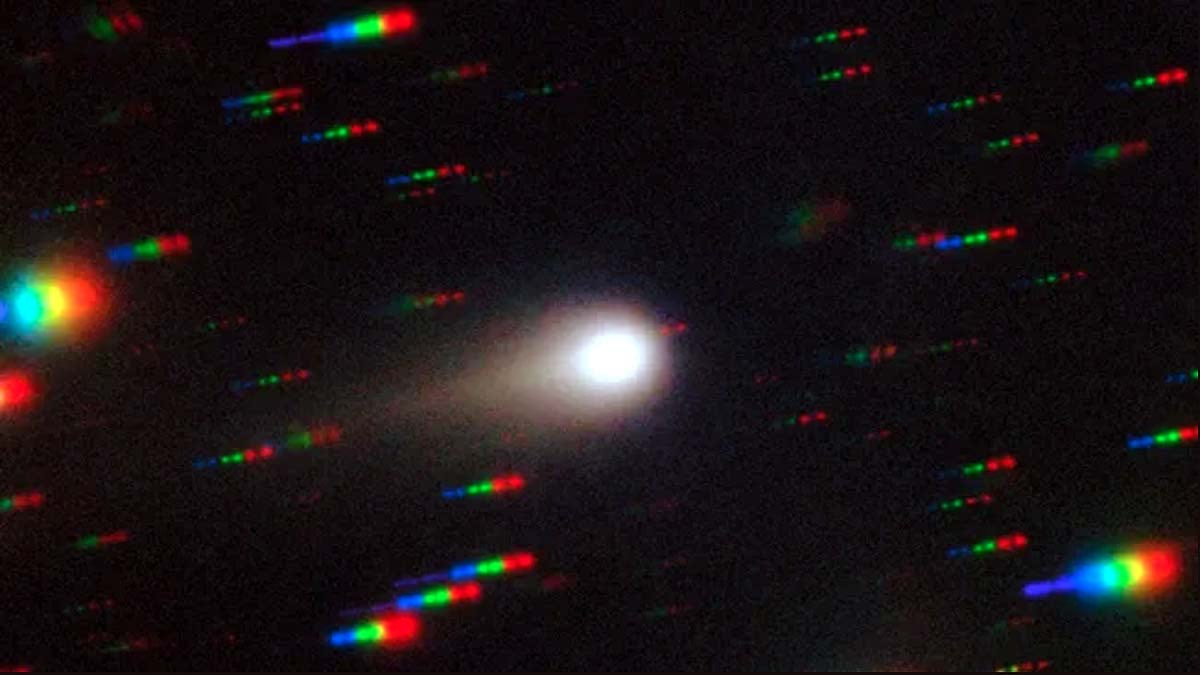A comet that may have wandered from distant stars billions of years ago is now approaching our sun. This is the 3I/ATLAS comet - the third object from beyond our solar system. Scientists have detected shiny vapors of nickel, a metal that seems improbable at such chilly temperatures far from the sun.
This discovery reveals the mysteries of worlds beyond our stars. The pivotal question remains - Will this comet collide with Earth?
No, it certainly won't. While it will come close to the sun (reaching its closest point on October 29, 2025), it will remain at a safe distance from Earth. The paths of such objects are calculated in advance, and systems like ATLAS issue collision warnings. For scientists, this represents a significant opportunity, not a threat.
On July 1, 2025, Chile’s 'Asteroid Terrestrial-impact Last Alert System' (ATLAS) observed a glowing object during their routine sky check. Initially thought to be an ordinary comet, it became apparent that this was a wandering traveler from outside our solar system.
Named 3I/ATLAS, it is preceded by the mysterious 'Oumuamua' (2017) and comet Borisov (2019). However, 3I/ATLAS was quickly detected when it was far from the sun, giving scientists the chance to observe its activation - as if opening an ancient book.
These cosmic objects are like time capsules. They are billions of years old, hailing from other stars (exoplanet systems). Though we may not reach those worlds, they reveal their chemical and physical secrets to us. The age of 3I/ATLAS likely exceeds that of our solar system - billions of years old.
Our international team (scientists from Chile, Belgium, Britain, Canada, New Zealand, the USA, and Italy) used Chile’s 'Very Large Telescope' (VLT) equipped with X-Shooter and UVES spectrographs, which dissect light to reveal chemicals.
The first major indication on July 20: The comet was 3.88 AU (1 AU = the distance from Earth to the sun, roughly 150 million km). There, temperatures are extremely cold (-150°C). Still, the spectrum revealed lines of nickel vapor. Nickel is a metal not expected to evaporate in such a chill. This gas was shimmering in the thin atmosphere (coma) around the comet.
How much nickel?
Measurements showed that nickel atoms were rapidly increasing near the comet. As it neared the sun, these quantities multiplied by 10-20 times. Surprisingly, iron was absent, which usually accompanies nickel.
Mid-August brought a new signal:
At 3.07 AU, cyanogen (CN) gas was found, common in solar comets. CN is a molecule composed of carbon and nitrogen.
Statistics:
VLT captured spectrum lines at 400-500 nanometer wavelengths, precise for nickel. The coma was measured to be 10,000-20,000 km in diameter.
This discovery is astonishing. Metals typically require temperatures over 1000°C to become gas. But on 3I/ATLAS, at 3.88 AU, it was merely -100°C. Scientists theorize...
Special molecules:
Nickel is possibly bound with carbon monoxide (CO) or organic compounds. Sunlight (UV rays) breaks these molecules down, releasing nickel. This process works even at low temperatures.
Why the difference?
Solar metallic comets usually bring nickel and iron together, but here, iron is absent. Perhaps chemical changes occurred during its space journey.
Scientific fact:
Nickel atoms were released at a rate of 10^12 to 10^14 per second, associated with photodissociation (breaking by light).
JWST observed the coma (comet’s gas cloud). Surprisingly, more carbon dioxide (CO2, the fizzy gas of soda) was found than water. In solar comets, the reverse is common - water dominates. However, it was accompanied by ice particles of water and CO gas.
Clear answer: 3I/ATLAS will not collide with Earth. Its trajectory has long been calculated. At its perihelion (closest to the sun) on October 29, it will be 1.5-2 AU away - 2-3 times farther than Earth. Systems like ATLAS and NASA detect potentially dangerous objects beforehand. This comet will simply pass by, leaving the solar system by 2026.




